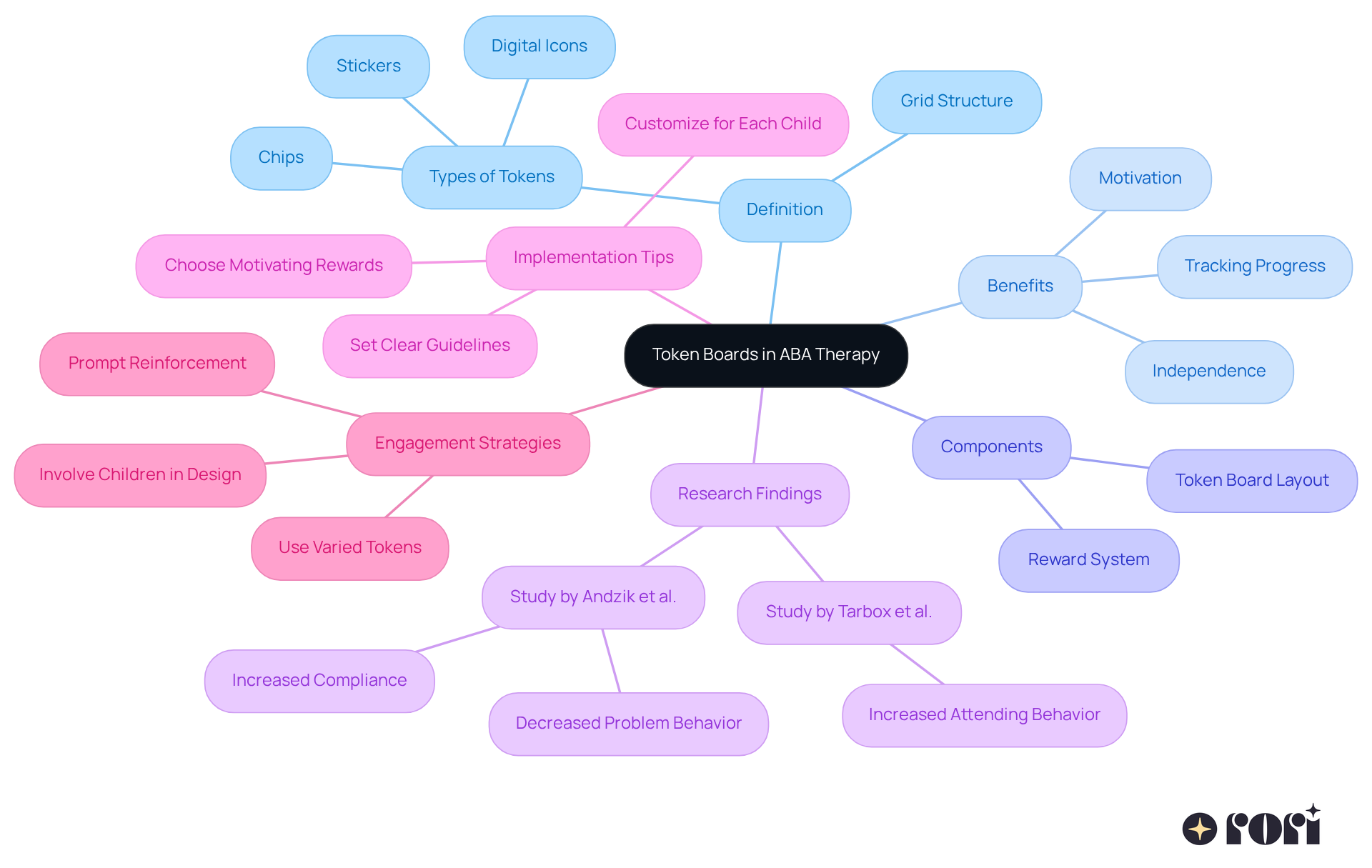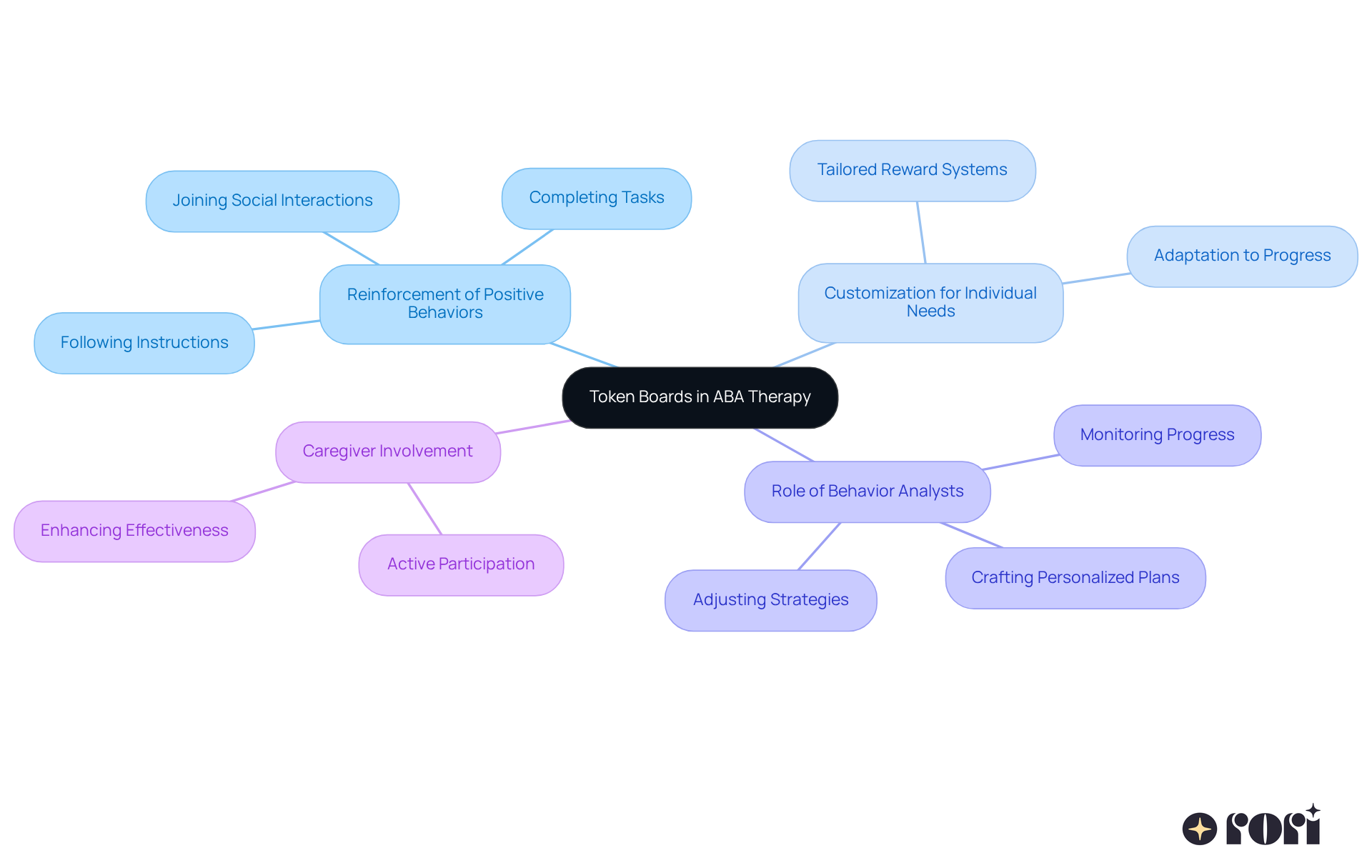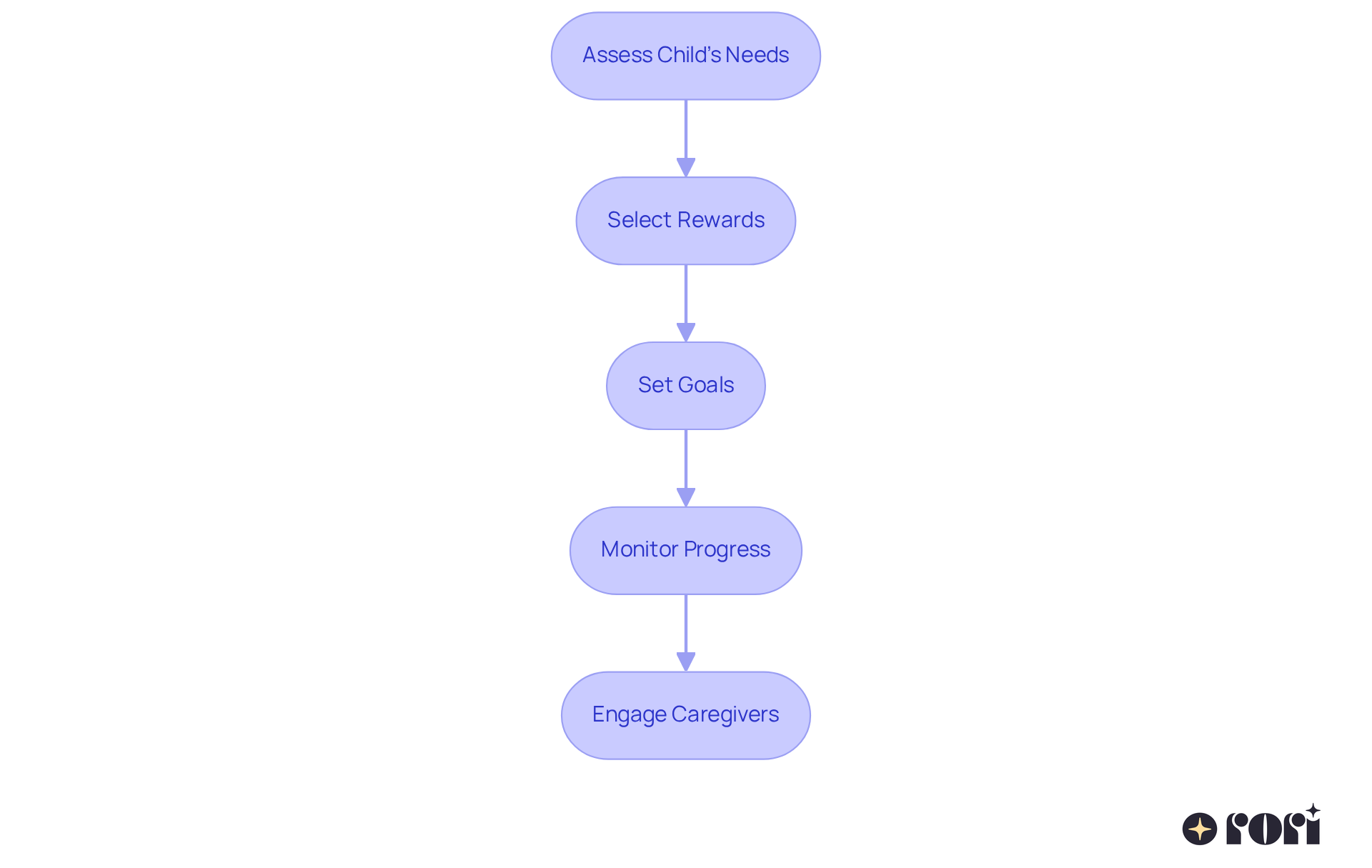Token boards are such a helpful part of Applied Behavior Analysis (ABA) therapy! They act as a fun reinforcement tool that encourages positive behaviors in children, especially those with autism. Imagine your child getting excited about earning tokens for good behavior—how motivating is that?
These boards provide visual feedback and rewards, making it easier for kids to engage in the behaviors we want to see. It’s like turning learning into a game! By using token boards, we can really enhance their learning and behavioral development.
Let’s explore this together! If you’re a parent looking for ways to support your child, consider how token boards might fit into your routine. We’re here to help you every step of the way!
In the world of Applied Behavior Analysis (ABA) therapy, finding effective reinforcement strategies is super important, especially for kids with autism. One tool that really shines in this area is the token board. It’s a fun and interactive way to help kids learn through a structured reward system. By using token boards, we can motivate positive behaviors and help children grasp the connection between their actions and the rewards they earn.
But here’s a question for you: how can caregivers and therapists make sure these systems stay effective and tailored to each child’s unique needs? 🤔 Let’s dive into the details of token boards! They have amazing potential, but there are also some challenges we need to consider. Together, we can explore how to make the most of this valuable tool!
In Applied Behavior Analysis (ABA) therapy, a token board serves as a handy tool for effective reinforcement! They help strengthen positive behaviors through a fun reward system, all while making learning feel like play. Typically, when explaining what a token board is, it features a grid or chart where tokens—like stickers, chips, or even digital icons—are placed as kids show off their good actions. Research shows that using rewards can really boost attention in kids with autism. For instance, one study highlighted how a young child’s focus improved significantly when a reward system was in place.
Once a child collects a certain number of tokens, as described in what a token board is, they can trade them for prizes like a favorite toy or activity. This approach not only encourages participation but also helps kids learn what a token board is, showing them the connection between their actions and the rewards they earn, which can really amp up their motivation and learning. Plus, when kids get involved in designing their reward charts, it adds an extra layer of excitement! Imagine how engaged they feel when they pick their tokens or help create their game layouts.
Recent studies back up the effectiveness of these reward charts in various settings, whether at home or in school. One study found that using a token-based system led to fewer problem behaviors and more compliance among kids. To make visual aids work even better, it’s important to set clear guidelines, choose motivating rewards, and customize the aids to fit each child’s preferences. Mixing up the items—like using different colors or themes—can really enhance engagement for kids using these systems. And don’t forget about prompt reinforcement! A little verbal praise and timely rewards can go a long way in boosting motivation and encouraging positive behaviors.
Overall, reward systems, such as what a token board is, are a fantastic resource in ABA therapy, helping kids with autism track their progress and inspiring them to learn new skills. As they start to connect their actions with real rewards, they gain a clearer understanding of their behavior, paving the way for greater independence and success in their everyday lives. Let’s explore this together and see how we can support our little ones on their journey!

In ABA therapy, reward charts serve as a helpful reinforcement system that supports kids with autism in learning and practicing new skills. They really shine when it comes to encouraging positive behaviors, like following instructions, completing tasks, or joining in social interactions. By providing quick visual feedback, these charts help young ones understand which actions are being praised. This immediate reinforcement is key in ABA, as it strengthens the link between the behavior and the reward, making it more likely that the behavior will happen again.
What’s great is that reward systems can be tailored to fit the unique needs of each child, making them a versatile tool in a therapist's toolkit. Skilled behavior analysts play a vital role in crafting these personalized plans, keeping a close eye on progress and tweaking things as needed to get the best results. Plus, when caregivers are actively involved in this process, it boosts the effectiveness of these reward systems, ensuring they truly support early intensive behavioral intervention (EIBI) in enhancing learning, communication, and social skills for children with autism.
Let’s explore this together! By understanding how these tools work, we can all contribute to the success of our little ones.

Using reward boards can be a great way to motivate and engage your child, but it does involve a few steps. First off, it’s important to take a good look at what your child really needs and what they enjoy. One helpful tip from Autism Care Specialists is to involve your child in the process. Let them pick out the types of rewards that excite them! For instance, some kids might love earning visual rewards like stickers or digital badges rather than physical items.
Next, think about the goals you set for earning those rewards. They should be realistic and achievable, gradually getting a bit tougher as your child progresses. This way, they can feel a sense of accomplishment along the way! And don’t forget to regularly check in and adjust the system based on how your child is doing and what they think. This keeps things fresh and engaging.
Active involvement from caregivers is key here! When caregivers are engaged, it can really boost behavioral outcomes. If you’re familiar with ABA principles, you can make choices that positively impact your child’s journey. Remember, the reward system should be flexible and adapt to your child’s changing needs.
Let’s explore this together! Your involvement can make a world of difference!

Reward charts can be a game-changer in therapy, and the benefits are truly abundant! 🌟 They provide clear visual cues that help kids understand what’s expected of them while promoting positive behavior. When you mix learning with play, these charts can really spark motivation. Kids get to see their progress in real-time, and who doesn’t love working toward something tangible?
This fun approach not only makes learning enjoyable but also encourages kids to get involved. However, it’s important to keep an eye out for some challenges. For instance, there’s a risk of kids becoming too dependent on external rewards, which might lessen their intrinsic motivation over time. Plus, if the goals are too tough or the rewards don’t resonate with them, it could lead to frustration.
That’s why it’s essential for parents and therapists to stay attuned to how the child is responding to what is a token board system. Making adjustments along the way can help ensure that reward charts remain a positive and effective tool in their behavioral development. Let’s explore this together and see how we can make the most of these strategies!

In the world of Applied Behavior Analysis (ABA) therapy, token boards truly shine as a fantastic tool for encouraging positive behavior and boosting learning. 🌟 By adding a fun and interactive reward system, these boards not only motivate kids but also help them see how their actions lead to rewards. It turns learning into an engaging game, making it so much easier for children to pick up new skills and behaviors.
As we explored this topic, some key insights popped up about how to implement and customize token boards:
Ultimately, token boards are more than just a tool for reinforcement; they’re a pathway to independence and success for children with autism. By embracing these systems and fostering teamwork among therapists, caregivers, and kids, we can unlock immense potential for positive behavioral change. Engaging with token boards not only enhances learning but also empowers children to take charge of their development, paving the way for a brighter future. Let’s explore this together! 💪
What is a token board in ABA therapy?
A token board is a tool used in Applied Behavior Analysis (ABA) therapy that features a grid or chart where tokens—like stickers, chips, or digital icons—are placed as children demonstrate positive behaviors. It serves as an effective reinforcement method to encourage good actions through a fun reward system.
How do token boards benefit children with autism?
Token boards help strengthen positive behaviors and boost attention in children with autism. Research indicates that using rewards can significantly improve focus and participation, making learning feel more engaging and motivating.
What happens when a child collects tokens on a token board?
Once a child collects a certain number of tokens, they can trade them for prizes such as a favorite toy or activity. This system helps children understand the connection between their actions and the rewards they earn, thereby increasing their motivation to learn.
How can children be involved in the token board process?
Children can be involved in designing their reward charts, which adds excitement to the process. Allowing them to pick their tokens or help create their game layouts enhances their engagement and investment in the system.
What does research say about the effectiveness of token boards?
Recent studies have shown that token-based systems lead to fewer problem behaviors and more compliance among children in various settings, including at home and in school.
What are some tips for making token boards more effective?
To enhance the effectiveness of token boards, it's important to set clear guidelines, choose motivating rewards, customize the aids to fit each child's preferences, and mix up the items used—like different colors or themes. Additionally, prompt reinforcement through verbal praise and timely rewards can further boost motivation.
How do token boards support children's independence and success?
Token boards help children with autism track their progress and inspire them to learn new skills. By connecting their actions with real rewards, they gain a clearer understanding of their behavior, which paves the way for greater independence and success in their everyday lives.